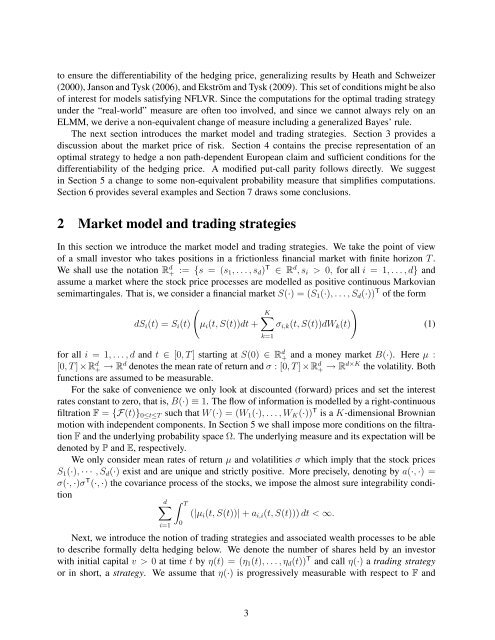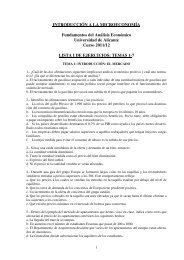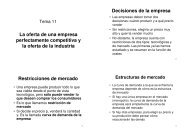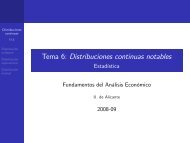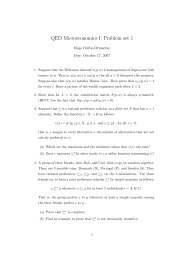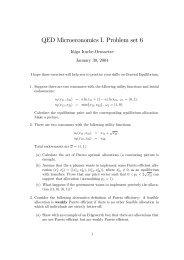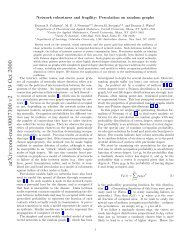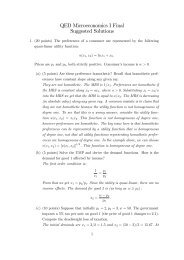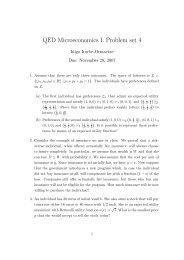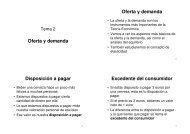Hedging under arbitrage
Hedging under arbitrage
Hedging under arbitrage
You also want an ePaper? Increase the reach of your titles
YUMPU automatically turns print PDFs into web optimized ePapers that Google loves.
to ensure the differentiability of the hedging price, generalizing results by Heath and Schweizer<br />
(2000), Janson and Tysk (2006), and Ekström and Tysk (2009). This set of conditions might be also<br />
of interest for models satisfying NFLVR. Since the computations for the optimal trading strategy<br />
<strong>under</strong> the “real-world” measure are often too involved, and since we cannot always rely on an<br />
ELMM, we derive a non-equivalent change of measure including a generalized Bayes’ rule.<br />
The next section introduces the market model and trading strategies. Section 3 provides a<br />
discussion about the market price of risk. Section 4 contains the precise representation of an<br />
optimal strategy to hedge a non path-dependent European claim and sufficient conditions for the<br />
differentiability of the hedging price. A modified put-call parity follows directly. We suggest<br />
in Section 5 a change to some non-equivalent probability measure that simplifies computations.<br />
Section 6 provides several examples and Section 7 draws some conclusions.<br />
2 Market model and trading strategies<br />
In this section we introduce the market model and trading strategies. We take the point of view<br />
of a small investor who takes positions in a frictionless financial market with finite horizon T .<br />
We shall use the notation R d + := {s = (s1, . . . , sd) T ∈ R d , si > 0, for all i = 1, . . . , d} and<br />
assume a market where the stock price processes are modelled as positive continuous Markovian<br />
semimartingales. That is, we consider a financial market S(·) = (S1(·), . . . , Sd(·)) T of the form<br />
dSi(t) = Si(t)<br />
�<br />
µi(t, S(t))dt +<br />
K�<br />
�<br />
σi,k(t, S(t))dWk(t)<br />
for all i = 1, . . . , d and t ∈ [0, T ] starting at S(0) ∈ R d + and a money market B(·). Here µ :<br />
[0, T ] ×R d + → R d denotes the mean rate of return and σ : [0, T ] ×R d + → R d×K the volatility. Both<br />
functions are assumed to be measurable.<br />
For the sake of convenience we only look at discounted (forward) prices and set the interest<br />
rates constant to zero, that is, B(·) ≡ 1. The flow of information is modelled by a right-continuous<br />
filtration F = {F(t)}0≤t≤T such that W (·) = (W1(·), . . . , WK(·)) T is a K-dimensional Brownian<br />
motion with independent components. In Section 5 we shall impose more conditions on the filtration<br />
F and the <strong>under</strong>lying probability space Ω. The <strong>under</strong>lying measure and its expectation will be<br />
denoted by P and E, respectively.<br />
We only consider mean rates of return µ and volatilities σ which imply that the stock prices<br />
S1(·), · · · , Sd(·) exist and are unique and strictly positive. More precisely, denoting by a(·, ·) =<br />
σ(·, ·)σ T (·, ·) the covariance process of the stocks, we impose the almost sure integrability condi-<br />
tion<br />
d�<br />
i=1<br />
� T<br />
0<br />
k=1<br />
(|µi(t, S(t))| + ai,i(t, S(t))) dt < ∞.<br />
Next, we introduce the notion of trading strategies and associated wealth processes to be able<br />
to describe formally delta hedging below. We denote the number of shares held by an investor<br />
with initial capital v > 0 at time t by η(t) = (η1(t), . . . , ηd(t)) T and call η(·) a trading strategy<br />
or in short, a strategy. We assume that η(·) is progressively measurable with respect to F and<br />
3<br />
(1)


